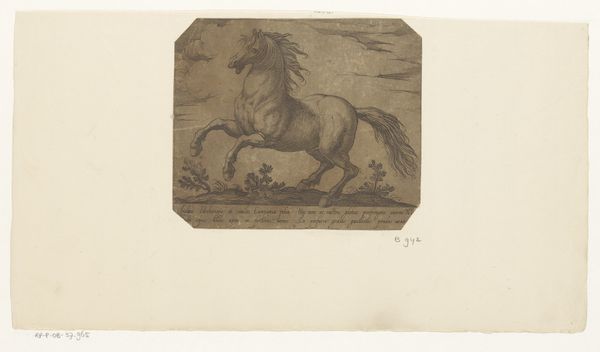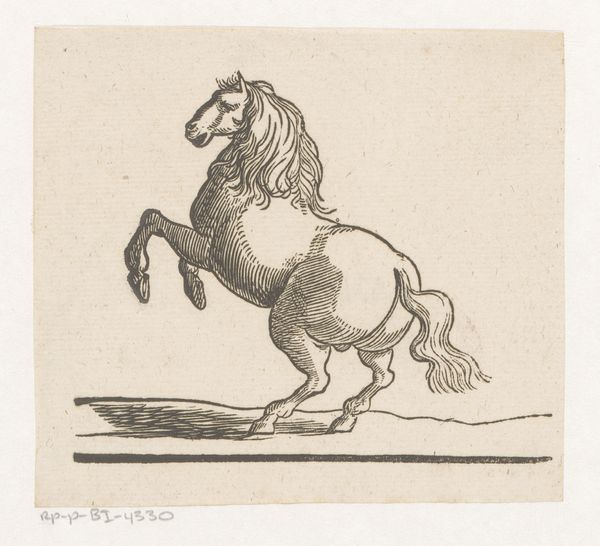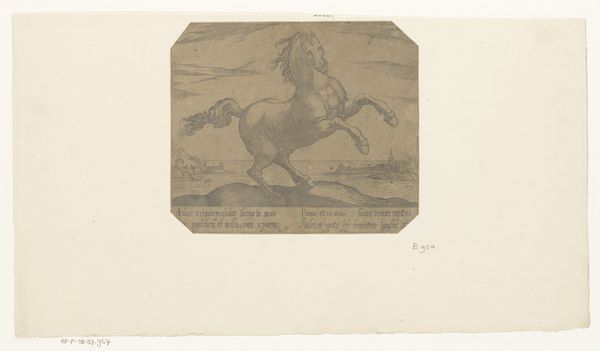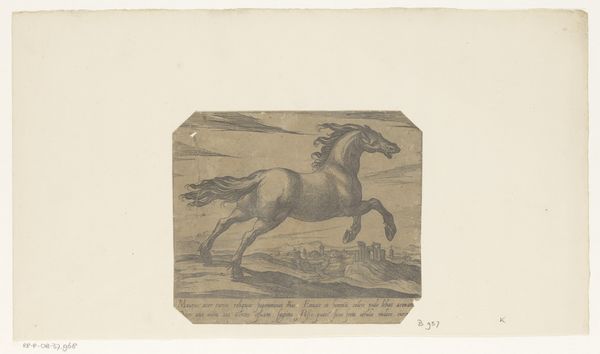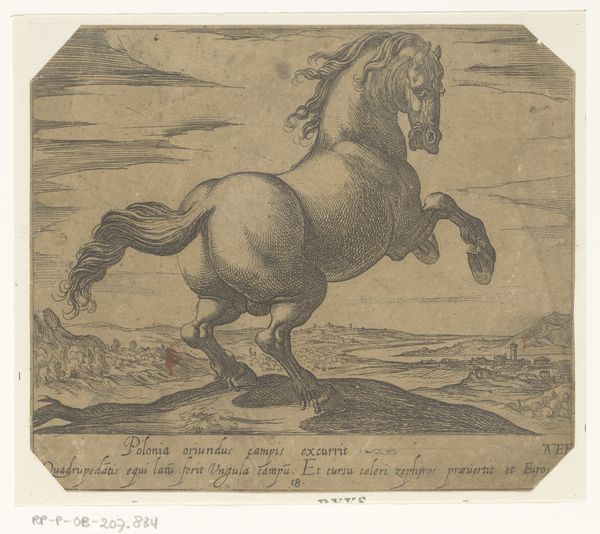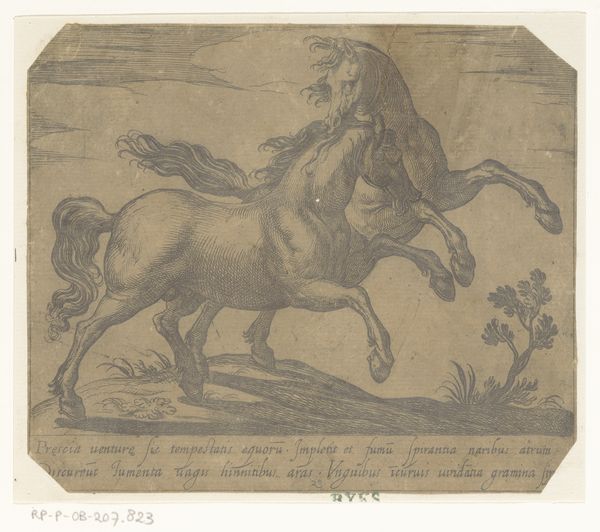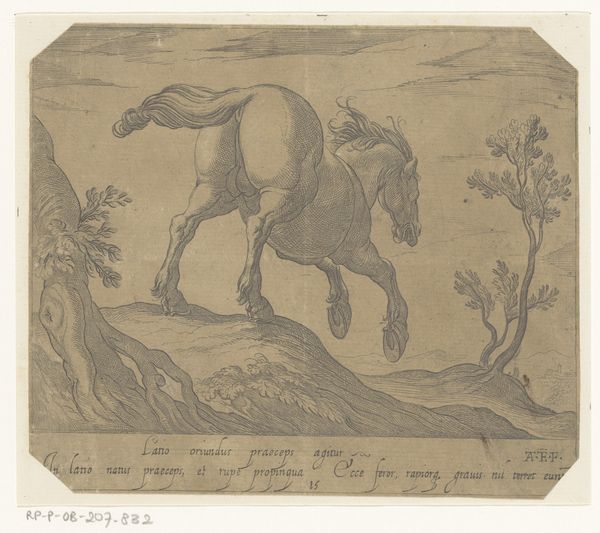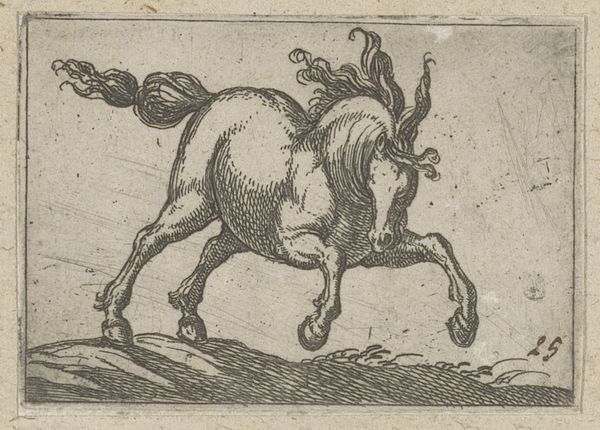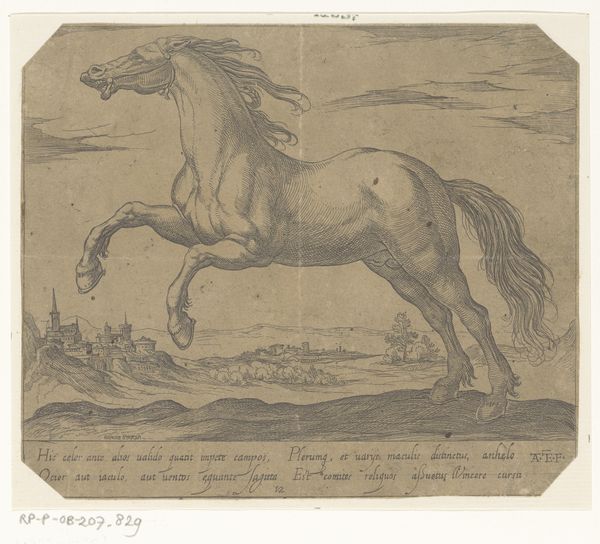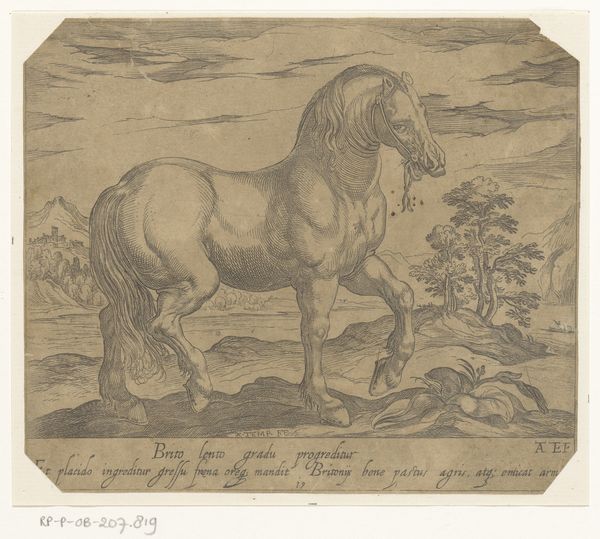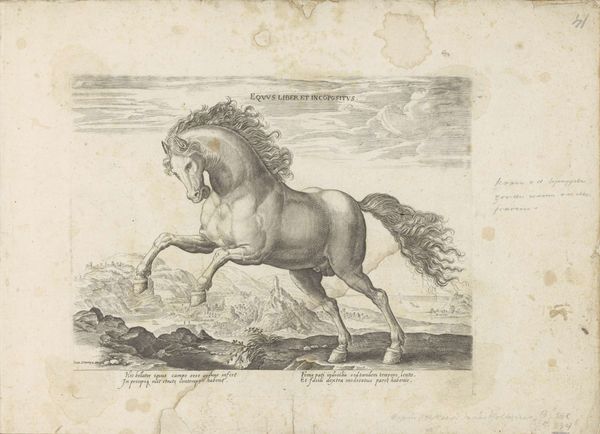
drawing, ink
#
drawing
#
baroque
#
animal
#
landscape
#
figuration
#
ink
#
horse
#
line
Dimensions: height 52 mm, width 71 mm
Copyright: Rijks Museum: Open Domain
Editor: So, this is "Steigerend Paard," or "Rearing Horse," a 17th-century ink drawing. I'm struck by how dynamic it is for something so small and rendered with simple lines. How do you see it? Curator: As a materialist, I look at this image through the lens of its production. Consider the readily available materials: paper, ink, and the tools needed for reproduction. The choice of ink as a medium speaks to accessibility and dissemination. What sort of workshops and artisans were capable of producing this work? How does it relate to broader print culture? Editor: I see. It makes you think about the everydayness of it. I suppose I was more caught up in the drama of the pose! The horse looks so powerful. Curator: Power is an interesting word. The power isn’t solely represented in the image, but in the *means* of representation. Consider the social context: Who was consuming images like these, and how did that shape the production process? Was it commissioned work? The widespread availability of prints was revolutionizing how people received information. Editor: So, instead of just seeing a picture of a horse, we should also think about the work and its accessibility as factors that may have impacted Baroque society. Curator: Precisely. How the drawing became an accessible item, reproduced perhaps countless times, each impression dependent on the labour and materiality inherent in the means of production, transforming the value, and disseminating its representation of the ‘horse.’ What do you think about the contrast between labor and aesthetic value? Editor: I hadn't thought about the labor involved in its reproduction. This really changes my perception of the image! Thank you! Curator: And thank you. It's crucial to view art with both critical engagement and an openness to considering its material reality.
Comments
No comments
Be the first to comment and join the conversation on the ultimate creative platform.
